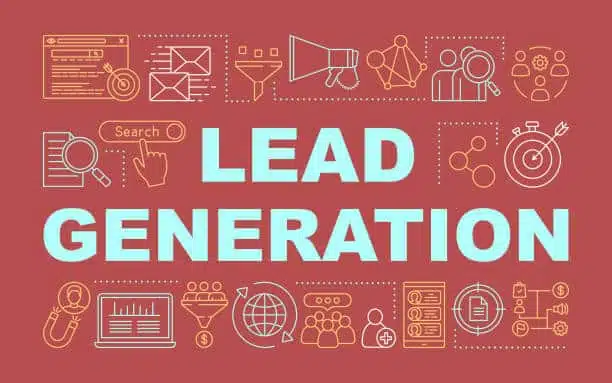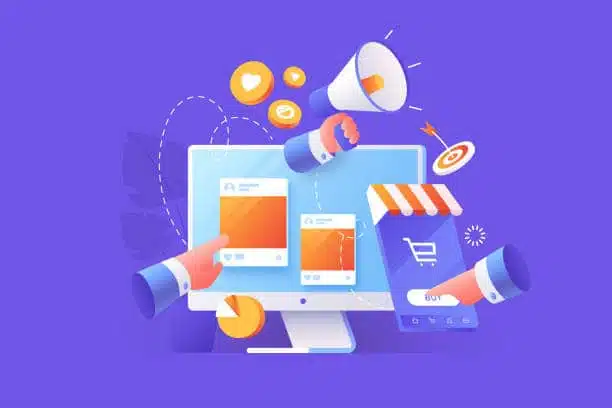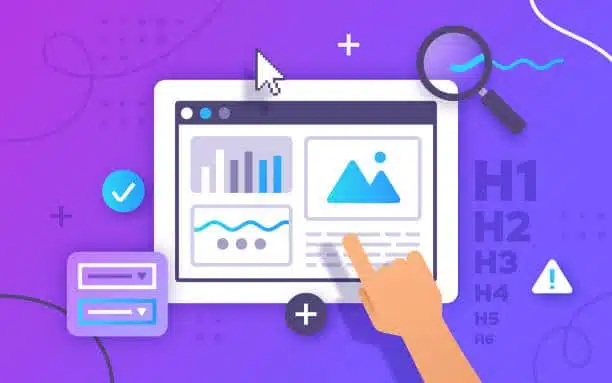Even if you don’t own or manage a business, you likely have at least a general familiarity with the term “lead generation.” But what, exactly, is lead generation, and how do businesses benefit from it? Furthermore, what is the process of lead generation, and how is it accomplished?
Without effective lead generation, your inbound digital marketing efforts will sputter to a stop before they truly get going. Anyone acquainted with standard inbound marketing pipeline or funnel models will recognize lead generation as an essential first step.
Read on for an in-depth but easy-to-understand explanation of lead generation and the critical role that it plays in the overall online marketing process.
What is Lead Generation and Why It’s Important

Marketing expert Lindsay Kolowich Cox succinctly and accurately defines a “lead” as “any person who indicates interest in a company’s product or service in some way, shape, or form.” But of course, not all leads are created equal.
A quality lead is a consumer prospect that has a genuine interest in the products or services that your company offers and is quite motivated to make a purchase. Therefore, good leads are key when it comes to increasing sales rates and improving overall return on investment (ROI) for your marketing dollar.
Consumers with a pre-existing interest in your company, its products, and/or its services will be eager to take the next steps down the marketing pipeline. They are generally grateful for any outreach that helps them resolve a necessary issue or fulfill a current need.

When a consumer has little or no interest in your company’s offerings, your advertising efforts may only push them farther away. In addition to wasting time and money on marketing that goes nowhere, this can cause only harm to the overall image and public reputation of your business.
As pointed out by Milkshake email template contributor Jack Paxton, the ability of strategic lead generation to match company offerings with target consumers results in a significantly higher rate of customer satisfaction. Of course, the ultimate goal of the lead generation process is to foster lasting consumer relationships that result in repeat business, third-party recommendations, and firm brand loyalty.
The Lead Generation Process
With the value of lead generation foremost in mind, marketing professionals have developed a broad spectrum of strategies and techniques to drive the lead generation process. This requires a tremendous amount of hard work and expertise because a good lead generation campaign will be as unique as the company it promotes.

Beyond the distinct marketing differences that exist among different market sectors and industries, no two companies will have the exact same business requirements, goals, or needs. Although this means that lead generation campaigns must be specifically tailored to each company, the basic frameworks for most of these campaigns tend to be remarkably similar.
In the world of digital marketing, lead generation occurs at the very beginning of the inbound pipeline, and each step that a consumer lead takes brings them further into that pipeline and closer to your business. The basic 4-step process begins when a consumer discovers your company and/or its offerings through one of your marketing channels.

1st Step: Discovering Your Business
The best marketing channels for your business will depend on the exact nature of that business. Ask yourself where your ideal customer is most likely to spend his or her time online. The answer will give you a good idea as to where to focus your initial lead generation efforts.
While you should certainly try to generate leads through your official website, you will also want to focus on other digital channels that may include social media sites, email, online directories, and blogs. You may also want to post digital coupons on various sites that will not only lead people to your eCommerce platform but will provide them with special pricing or another valuable offer.

2nd Step: Call-to-Action
No matter where it appears or what specific form it takes, your outreach to promote initial business discovery should include an effective call to action (CTA). Briefly defined, a CTA is a message, image, or button that encourages a specific action on the part of those who encounter it.
This action typically leads to some sort of customer conversion that is important to your company. In terms of lead generation, CTAs might lead consumers to more information, ask for consumer details, or begin the purchase process. Most CTAs make the conversion process as easy as possible by taking the form of a clickable hyperlink or tag.
3rd Step: Landing Page

After clicking on a CTA, a consumer generally goes directly to a company landing page. Digital marketers create landing pages to capture specific lead information about each visitor and encourage another step into the inbound marketing pipeline.
Although basic and generic landing pages may try to cater to all kinds of incoming consumers, marketers can more effectively capture a visitor with a landing page that is relevant to the particular CTA that brought him or her to the website in the first place. These types of dedicated landing pages can be designed around specific promotional offers, specific target audiences, or specific products/services.
4th Step: Filling Out Forms

After bringing visitors to a landing page, a marketer will want to transform them into a lead by getting them to input contact information. Many times, this transformation to sales lead immediately precedes a transition to paying customers.
Even visitors who fail to make an immediate purchase may become loyal repeat customers over time if you can get them to fill out an online form. These online forums are a key part of any good landing page design and often allow visitors to take advantage of an offer that enticed them during the first step of the lead generation process.
Acquire More Leads!
An optimal process of lead generation will lead to more sales, better ROI, and increased customer satisfaction. And only a qualified digital marketing agency like Cleveland, Ohio’s Marketing Done Right can ensure that you are getting more and better leads.